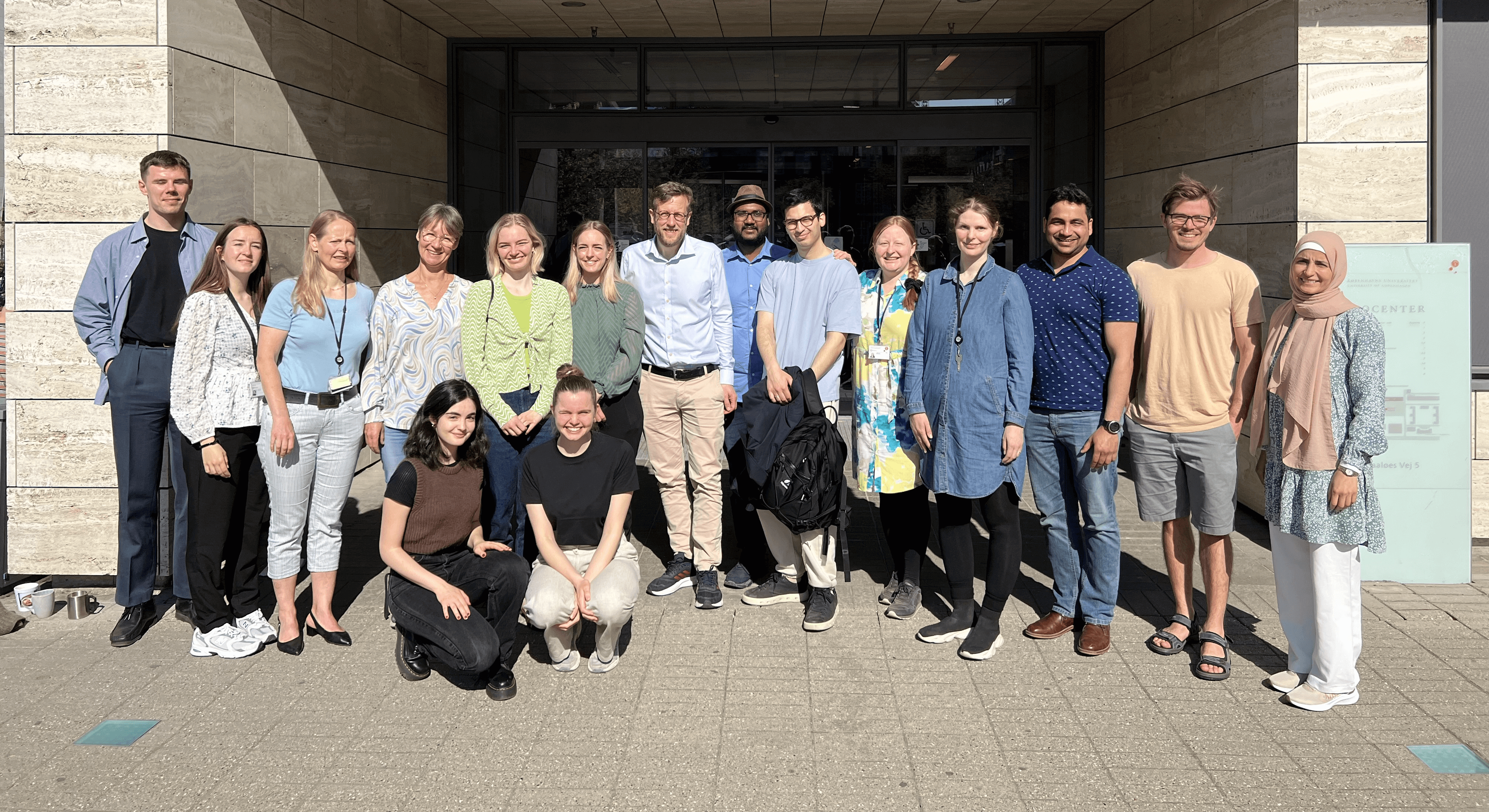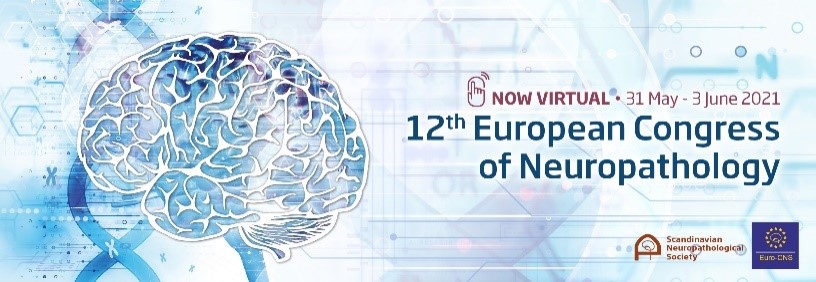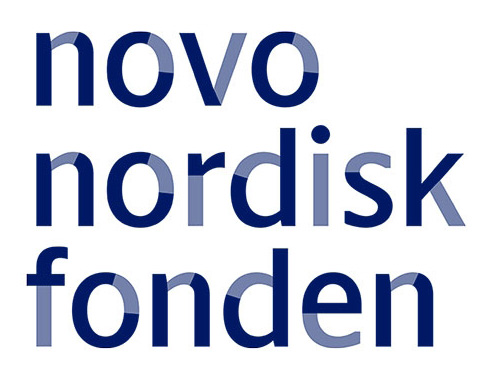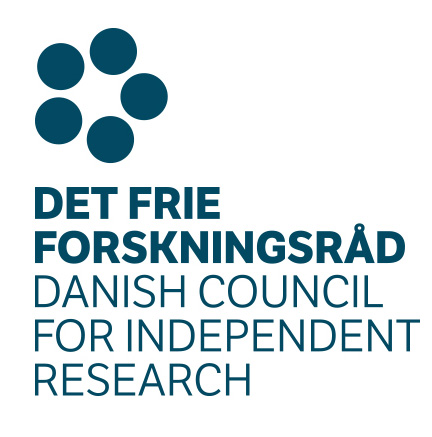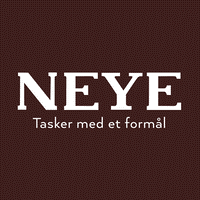Kristensen Group
Our scientific goal is to obtain a deeper understanding of brain cancer and thereby to discover novel promising therapeutic approaches for glioblastoma patients.
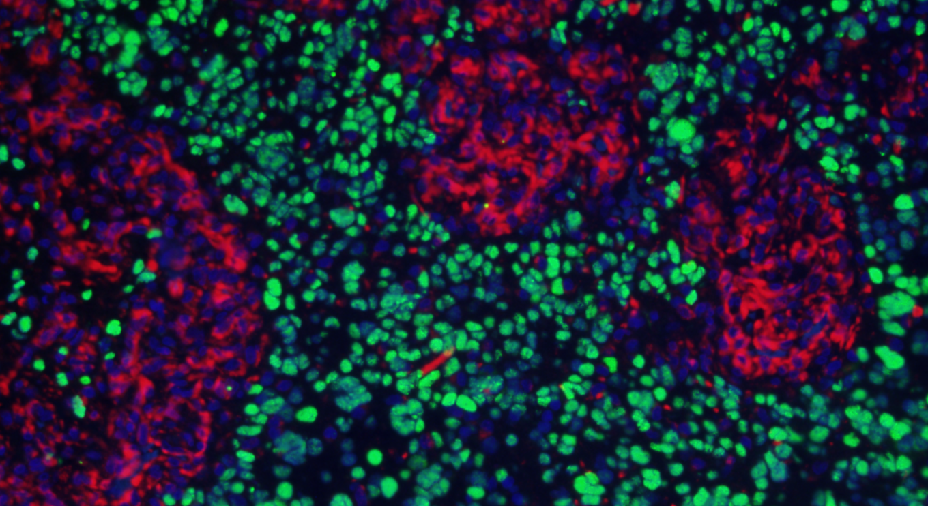
The Kristensen Group is located at the Bartholin Institute, which is part of Department of Pathology at Rigshospitalet, Copenhagen University Hospital.
Glioblastoma is the most frequent and malignant type of brain cancer and most patients have a poor survival. Novel therapeutic targets and strategies that overcome the efficient mechanisms of resistance are urgently needed. Our aim is to identify novel targets and to understand and overcome mechanisms of resistance in the microenvironment of glioblastomas. The microenvironment is heterogenous leading to potentially different mechanisms of resistance in the core and periphery of glioblastomas. Adding to the complexity, there is a high frequency of non-tumor cells in glioblastomas leading to potential critical cross-talk between tumor cells and microglial cells and macrophages and other cell types. Having identified novel clinical relevant targets taking the interaction between tumor cells and the microenviroment into account, we can turn this knowledge against the glioblastoma from a therapeutic point-of-view.
Microenvironment, tumor recurrence and prognosis
- We recently demonstrated - using a patient-derived glioblastoma resection model - that surgery leads to early recurrences having more tumor-associated microglia and macrophages (TAMs) and being more aggressive than primary glioblastomas. This involves pleiotrophin-mediated self-renewal of glioblastoma stem cells in recurrent tumors. Knudsen et al, Neuro Oncology, (2022), PMID: 34964899 doi: 10.1093/neuonc/noab302
- We found that a high amount of TAMs expressing CD204 is associated with poor prognosis in patients receiving chemotherapy. Sørensen et al, NAN, (2018) PMID: 28767130 DOI: 10.1111/nan.12428
- Our data showed that MGMT protein expression in tumour cells has an independent prognostic significance in glioblastoma and that exclusion of nontumour cells from the analysis contributed to a more exact analysis of tumor-specific MGMT protein expression. Dahlrot et al, NAN, (2018) PMID: 28574607 DOI: 10.1111/nan.12415
Spatial insight into the microenvironment
- We recently demonstrated – using spatial profiling – that a differential expression pattern of checkpoint markers exists in the normoxic and hypoxic microenvironment of glioblastomas. This may have therapeutic implications. Petterson et al, Brain Pathology, (2023), PMID: 36093941
- In another study we found that tumour-associated CD204+ microglia/macrophages accumulate in perivascular and perinecrotic niches and correlate with an interleukin-6 enriched inflammatory profile in glioblastoma, Sørensen et al, NAN, (2022), PMID: 34713474 DOI: 1111/nan.12772
Mutational profile influences the microenvironment
- D 2-HG in IDH-mutant astrocytic gliomas suppresses the host immune system, potentially by promoting immune escape of IDH-mutant tumors. Zhang et al, Clin Cancer Research (2018) PMID: 30006485 DOI: 10.1158/1078-0432.CCR-17-3855
- We showed that IDH mutation is associated with diminished levels of TIM-3+ cells and fewer interactions between TIM-3+ T cells and galectin-9+ microglia/macrophages, suggesting reduced activity of the galectin-9/TIM-3 immune checkpoint pathway in IDH-mutant astrocytic gliomas. Sørensen et al, Brain Pathology (2020). PMID: 33244787 DOI: 10.1111/bpa.12921
Migrating glioma cells and aggressiveness
- We have demonstrated that migrating peripheral glioblastoma cells give rise to new brain tumors upon xenografting supporting that this cell population is of critical importance. Munthe et al, JNO (2016) PMID: 27510953 DOI: 10.1007/s11060-016-2221-y
- Migration of glioblastoma cells into organotypic brain slice cultures mimics tumor cell invasion into the brain in vivo. Jensen et al, PLoS One (2016) PMID: 27454178 DOI: 10.1371/journal.pone.0159746
- We demonstrated that EGR3 may be implicated in cell migration in glioblastoma. Knudsen et al, Scientific Report (2020) PMID: 32518380 DOI: 10.1038/s41598-020-66236-x
Identification of novel therapeutic strategies for brain cancer with spatial profiling of the hypoxic niche
Glioblastomas are characterized by extensive areas with hypoxia, peri-necrotic palisades and microvascular proliferation, which are diagnostic hallmarks of glioblastoma. These aspects are part of the hypoxic niche in glioblastoma and has been associated with stem-like cells and therepeutic resistance. In this project we hypothesize that the tumor-associated microglia and macrophage (TAM) rich microenvironment of the hypoxic niche with both hypoxic TAMs and tumor cells support a TAM and/or tumor cell phenotype, that express novel therapeutic targets, which can be targeted and lead to improved survival in a pre-clinical glioblastoma model with tumor resection and recurrence. Methodologically we will use spatial profiling of these cell populations covering the full spectrum of cells from the hypoxic niche to microvascular proliferations.
Therapy resistance in glioblastoma and microenvironment
The aim of this project is to interrogate the existence and characteristics of different clinically important TAM subtypes in glioblastoma and to experimentally target novel TAM-related therapeutic candidates. We are using RNA single-cell sequencing (scSeq) on isolated TAMs from fresh patient glioblastoma tissue and validation by histological high-end biomarker multiplexing with metal-tagged antibodies (Imaging Mass Cytometry). Impact of candidate targets on patient survival are investigated by well annotated patient cohorts including a cohort used for an international multicenter trial. scSeq has revealed the existence of tumor promoting TAM subtypes, which we now validate and investigate functionally.
Improved pre-clinical models
Novel therapies are rarely investigated in the context of tumor resection in preclinical models - although chemo-radiation therapy is given after resection in patients. However, early recurrent patient glioblastomas contain a high amount of inflammatory and reactive cells, which interact with and affect tumor cells. The aim of this project is to use a novel improved pre-clinical model with tumor resection to interrogate the tumor cell phenotype and the microenvironment in early glioblastoma recurrences in order to identify and test potential novel targets.
We use brain cancer tissue from patients for in vitro and in vivo models, transfection, confocal time-lapse microscopy, Western blotting, PCR, flow cytometry as well as single cell sequencing.
To discover novel targets, biomarkers and resistance mechanisms, we use patient cohorts, spatial profiling, immunohistochemistry, computer-based biomarker analysis, NGS, genome wide methylation profiling, mRNA profiling and proteomics.
Core facilities
The better understand the role of the spatial organization of cells and tissue compartments in brain tumor tissue, we use immunofluorescence multiplexing and deep spatial profiling as important techniques. We have established and use the two core facilities below for these studies. The core facilities are open to all users, who can benefit from these techniques.
- The Vectra Polaris Imaging system for immunofluorescence multiplexing. The core facility is localized in the Bartholin Institute.
- The Nanostring GeoMx platform for deep spatial profiling. The core facility is localized in the Bartholin Institute.
Selected publications
SA Petterson, MD Sørensen, M Burton, M Thomassen, TA Kruse, SR Michaelsen, BW Kristensen. Differential expression of checkpoint markers in the normoxic and hypoxic microenvironment of glioblastomas, Brain Pathology, 2023 Jan; 33 (1):e13111, PMID: 36093941
AM Knudsen, B Halle, O Cédile, M Burton, C Baun, H Thisgaard, A Anand, C Hubert, M Thomassen, SR Michaelsen, BB Olsen, RH Dahlrot, R Bjerkvig, JD Lathia, BW Kristensen. Surgical resection of glioblastomas induces pleiotrophin-mediated self-renewal of glioblastoma stem cells in recurrent tumors. Neuro Oncol. 2022 July 1;24(7):1074-1087, PMID: 34964899
MD Sørensen, BW Kristensen. Tumour-associated CD204+ microglia/macrophages accumulate in perivascular and perinecrotic niches and correlate with an interleukin-6 enriched imflammatory profile in glioblastoma. Neuropathol Appl Neurobiol. 2022 Feb;48(2):e12772, PMID: 34713474
BW Kristensen, LP Priesterbach-Ackley, JK Petersen and P Wesseling. Molecular Pathology of Tumors of the Central Nervous System. Ann Oncol. Aug 1;30(8):1265-1278, 2019. PMID 31124566.
M.D. Sørensen, R.H. Dahlrot, H.B. Boldt, S. Hansen and B.W. Kristensen. Tumor-associated microglia/macrophages predict poor prognosis in high-grade gliomas and correlate with an aggressive tumor subtype. Neuropathol Appl Neurobiol, Feb;44(2), 185-206, 2018. PMID 28767130.
LP Priesterbach-Ackley*, HB Boldt*, JK Petersen*, N Bervoets, D Scheie, BP Ulhøi, M Gardberg, T Brännström, SH Torp, E Aronica, B Küsters, WFA den Dunnen, FYFL de Vos, P Wesseling*, WWJ de Leng* and BW Kristensen*. Brain tumour diagnostics using a DNA methylation-based classifier as a diagnostic support tool. Neuropathol Appl Neurobiol Aug;46(5):478-492, 2020. *Shared first and last authorship PMID 32072658. Brain Pathol. 2020 Nov 26 Online ahead of print. PMID: 33244787
Grant from NEYE-Foundation
Professor Bjarne Winther Kristensen receives grant (DKK 1.905.385) from NEYE-Foundation for the project: Targeting glioblastoma recurrence by novel insight into the post-surgical microenvironment in patients
European Congress of Neuropathology
Kristensen group hosts the 12th European Congress of Neuropathology with Professor Bjarne Winther Kristensen as Congress President
In the media
Danske forskere finder roden til hjernekræftens onde
- November 2016


